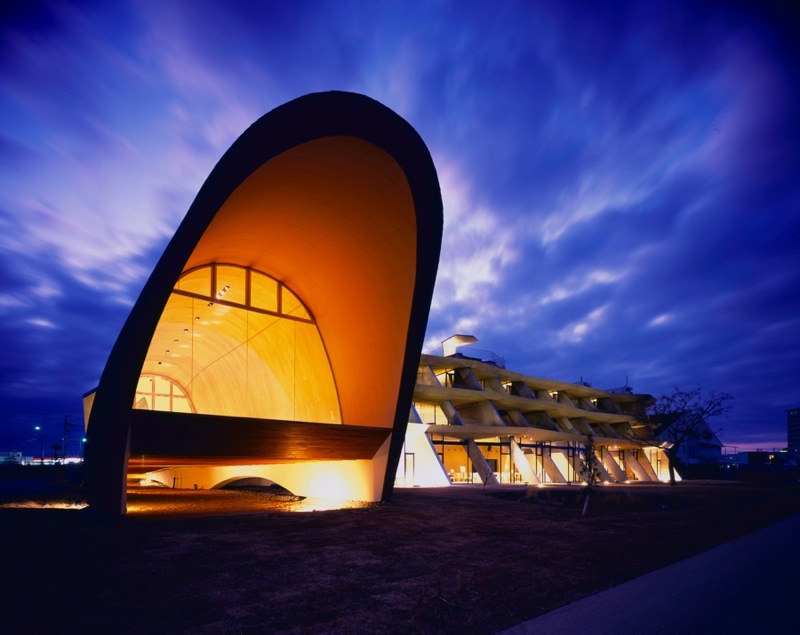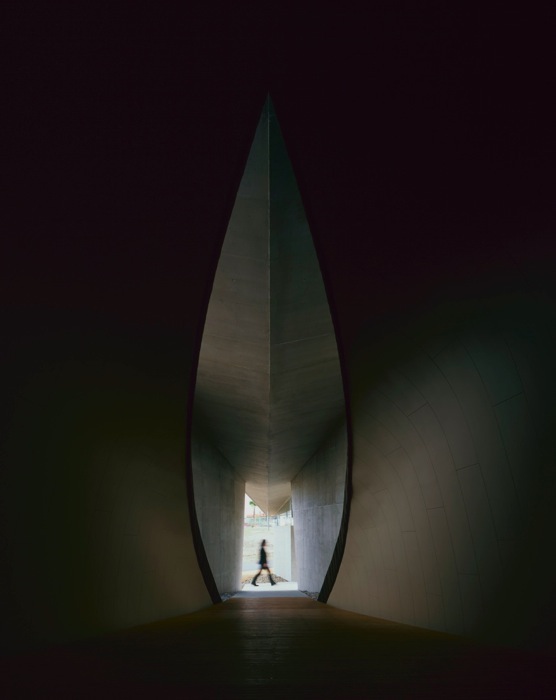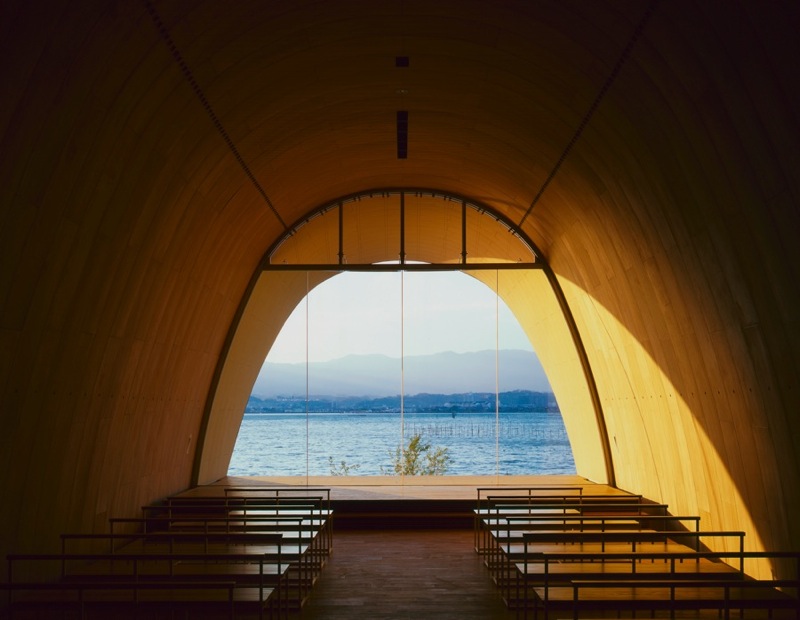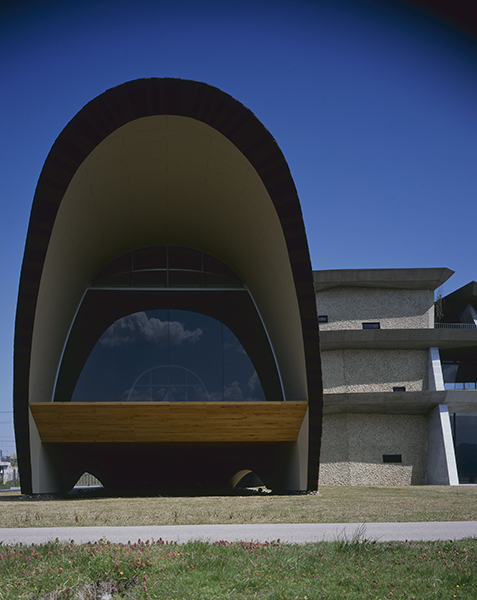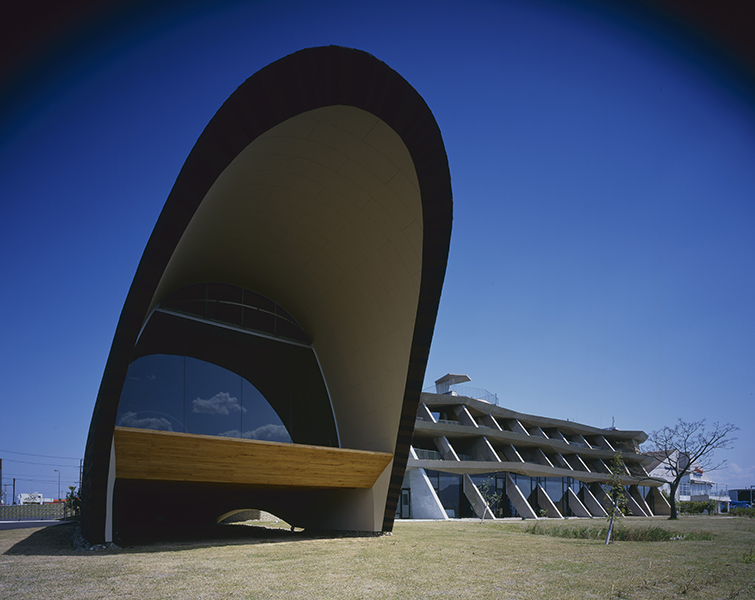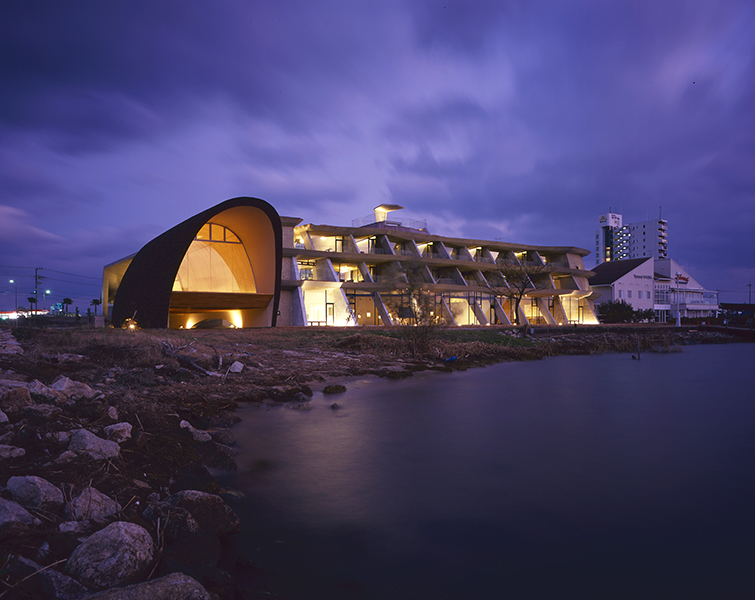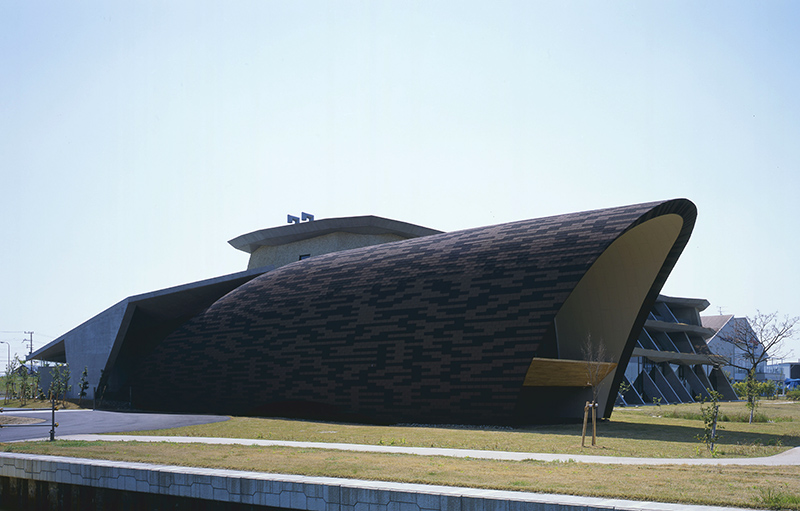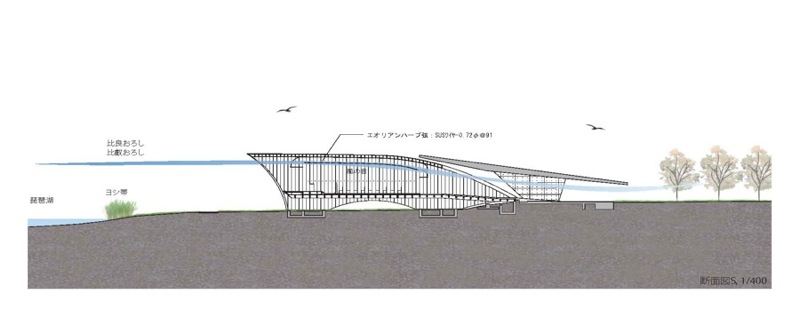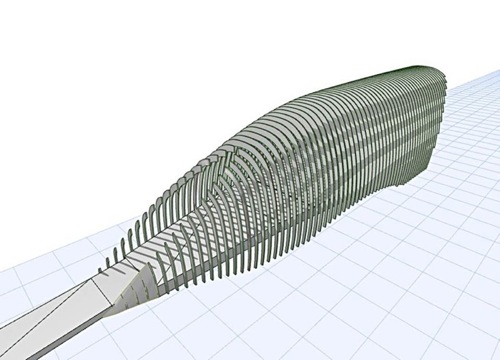風の音| SOUND OF WIND
CONCEPT
ホテルに付随するチャペルの計画ある。琵琶湖から吹く自然の風を強く感じれる空間をつくろうとした。そこで今回私達は、自然現象である風が音を奏でる楽器としての建築をつくれないかと模索し、弦楽器エオリアン・ハープの構造を応用し、風が通り抜けると音を奏でる空間をつくろうとした。
内部空間にいかに速度のある風を生みだすか、模型とシュミレーションによる解析を繰り返しながら、建築形態や開口部の詳細を検証していった。構造体として国産カラマツ材LVLの湾曲材による連続した架構をつくり、フレーム外側に構造用合板を貼り、水平力を担わせている。内部空間の上部を風道として計画し、そこに0.72mmのSUSワイヤーを91mmピッチで貼る。すると流れる空気によって弦の周囲にカルマン渦が発生し、それらを加振力として弦が共振をし始め、筐体である木造の建築壁内で共鳴し音が生まれる。内側の合板は振動を高めるように極力薄くしようと考え2.5mmの厚さとしている。また西と東に設けた開口部の開閉具合を変えるによって風の力をコントロールし、音色を変えることができる楽器としての建築である。
人々はこの楽器の中に入りこみ、耳を澄ませる。常時は琵琶湖の波音を反響する穏やかな空間であるが、空間内にある強度の風が流れ始めると、高い風の音が聞こえ始め、風の速さや向きによって音色は変化していく。琵琶湖と周辺山脈の非均質な太陽エネルギーの関係そして地球の引力や地表の摩擦力などのエネルギーによって変化を伴いながら生じる風が音として現れるとき、この建築を介在して、人々はこれまでには感じ取れなかったさまざまな自然の力を想像することができるのである。
The idea of a chapel associated with the hotel. It assumes a space filled with natural wind blowing from the Lake Biwa. Therefor we seek to make from this project a chapel as an instrument played by the tuneful natural wind, a structural stringed instrument interpreted as an Aeolian Harp, a space that plays the sound when the wind and nature passes through. To produce the wind speed desired, we kept making and reading analysis and simulations trough models of the internal space, then we started working in the openings that creates shape into an architectural building. To create a continuos curved frame structure, domestic LVL was chosen as a material, it was then bended to create the structure, the structural plywood frame shapes the outside thereby playing a horizontal force. Plan as an upper airway of the internal space, I put in a 91mm pitch of 0.72mm SUS wire there. Then Karman vortex is generated around the string by the air flow, the strings began to resonance as vibration force, the sound then is born, it resonates in its wooden enclosure walls. Its thickness of 2.5mm thin inner plywood try as possible to increase the vibration. Futhermore, the instrument can be used to control the force of the wind by changing the degree of openings, closing or opening a portion of the windows present on the east side, changing the tone. Delving into this instrument, it covers people with its calm space and echo of the sound of the waves of the Lake Biwa, at all times, but when the wind in the space begins to flow stronger, the tone will change, also depending on the direction and speed of the wind. When the wind that occurs accompanied by changes in its energy the friction force of the earth’s surface and attraction of the Earth and relations of a non-homogeneous solar energy of the surrounding mountains, and the Lake Biwa to the people inside, the sound interposes between what landscape and nature and what is architecture, a imperceptible variety of natural forces invade the imagination.
| LOCATION | 滋賀県守山市 Moriyama City,SHIGA,JAPAN |
|---|---|
| CATEGORY | COMMERCIAL |
| TYPE | CHAPEL |
| DATE | 2013.10 |
| STATUS | completed |
| SCALE | 2,213.30㎡ |
| STRUCTURE | 木造(風の音棟) |
| CLIENT |
発注者:セイレイ興産 事業主体:ホロニック(株) |
| CONSTRUCTOR | 戸田建設 |
| COLLABORATORS |
機械設備:イーエスアソシエイツ 電気設備:環境トータルシステム 照明 :岡安泉照明設計事務所 音響設計協力:中川弦楽器製作所 環境シュミレーション協力: 神戸芸術工科大学 小玉祐 |
| PHOTO | kaori ichikawa |
| AWARD |
LEAF AWARD 2014 JCD INTERNATIONAL DESIGN AWARD 2014 銀賞 Re-thinking The Future Award second award 第17回 木材活用コンクール 日本木材青壮年団体連合会 会員特別賞 第5回木質建築空間デザインコンテストを最優秀賞 |
| PUBLICATIONS |
『新建築』2013.12 建築技術6月号 月刊ホテル旅館の5月号 日経アーキテクチャ2月号 レジャー産業1月号 日本の原点シリーズ7 土 商店建築2014年7月01日号 ARCHITECTURE CULTURE No.398 日経アーキテクチャー2014年5月25日号 |
| NOTES | - |
◉『風の音』が音を奏でる様子はこちらから
http://www.youtube.com/watch?v=HKVz0ipyCBU&feature=youtu.be

